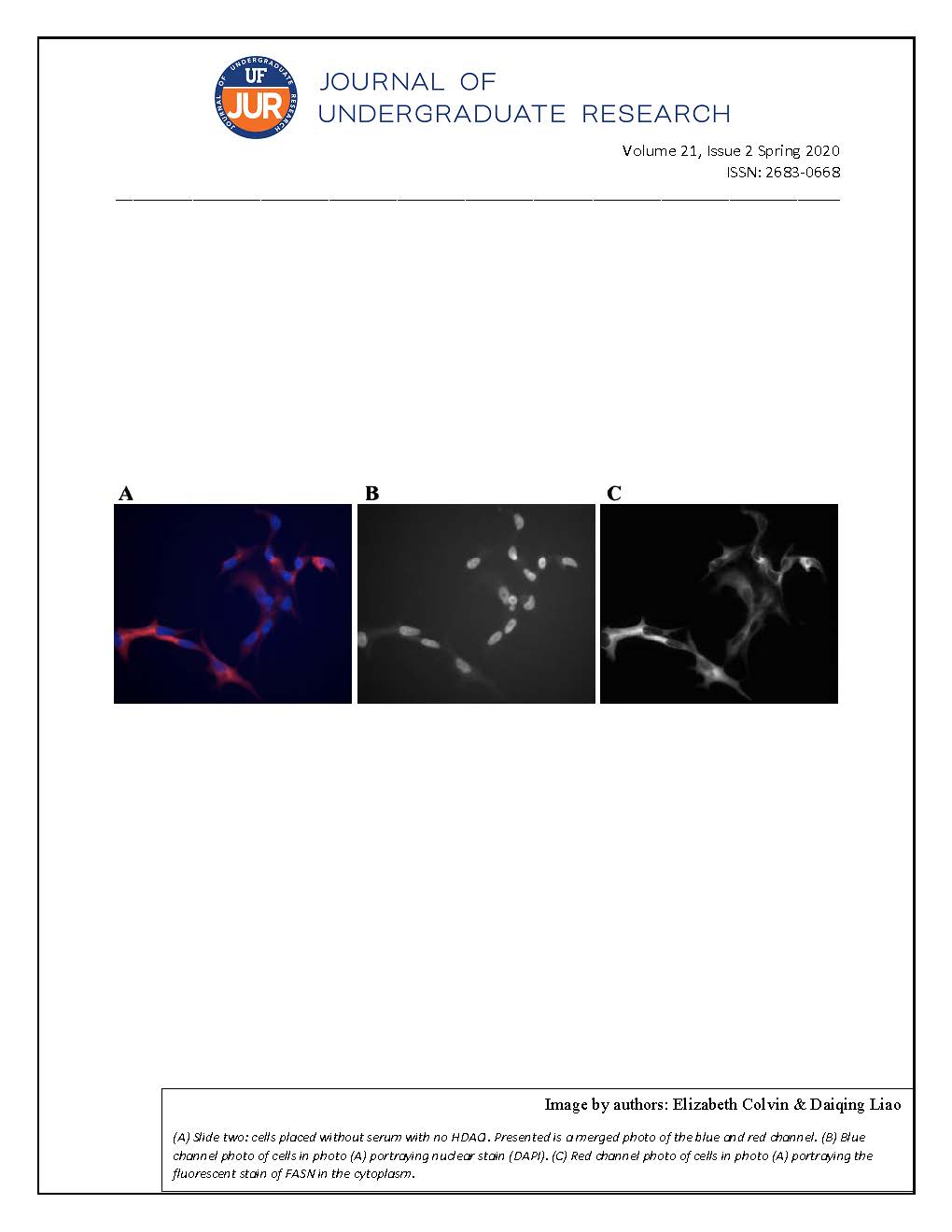Developing a Nicotiana benthamiana – Citrus tristeza virus model system to study superinfection exclusion
DOI:
https://doi.org/10.32473/ufjur.v21i2.108523Keywords:
superinfection exclusion, Citrus tristeza virus, Nicotiana benthamianaAbstract
Citrus tristeza (CTV) is the causal agent of economically devasting diseases that affect global citrus production. CTV has demonstrated superinfection exclusion (SIE), a phenomenon where a preexisting viral infection excludes a secondary infection by the same or closely related virus. This phenomenon has been used to develop cross-protection measures against CTV but there have been erratic results with this approach. Understanding of SIE by CTV on the molecular level has been challenging, especially due to time-consuming trials of over a year when citrus plants are used in the experiments. The purpose of this study was to develop a model system to study SIE by CTV by using a more amenable species, Nicotiana benthamiana, rather than citrus plants. cDNA constructs of CTV containing extra genes of the green or red fluorescent proteins (GFP/RFP) were engineered and transformed into Agrobacterium tumefaciens to visualize virus movement and SIE within the N. benthamiana plants by using the agro-infiltration approach for the virus constructs delivery. The constructs carrying the full-length wild-type virus with the additional GFP- or RFP-encoding gene and the GFP-tagged hybrid constructs with deletion in the p33 gene were infiltrated with the agro-suspension and visualized under a microscope. The images captured were analyzed for peaks in grayscale values in the green or red channels along a line. The constructs used in the study behaved similarly in N. benthamiana and Citrus macrophylla but the trial time was significantly shortened with the N. benthamiana plants. Thus, N. benthamiana is a suitable alternative for studying SIE by CTV with the constructs in this study.
References
References
Ambrós, S., El-Mohtar, C., Ruiz-Ruiz, S., Peña, L., Guerri, J., Dawson, W. O., & Moreno, P. (2011). Agroinoculation of Citrus tristeza virus Causes Systemic Infection and Symptoms in the Presumed Nonhost Nicotiana benthamiana. Molecular Plant-Microbe Interactions,24(10), 1119-1131. doi:10.1094/mpmi-05-11-0110
Atallah, O. O., Kang, S., El-Mohtar, C. A., Shilts, T., Bergua, M., & Folimonova, S. Y. (2016). A 5′-proximal region of the Citrus tristeza virus genome encoding two leader proteases is involved in virus superinfection exclusion. Virology,489, 108-115. doi:10.1016/j.virol.2015.12.008
Bar-Joseph, M., Marcus, R. & Lee, R.F. (1989). The continuous challenge of Citrus tristeza virus control. Annual Review of Phytopathology,27, 291-316.
Bergua, M., Kang, S. & Folimonova, S. Y.. (2016). Understanding superinfection exclusion by complex populations of Citrus tristeza virus. Virology,499, 331-339. doi:10.1016/j.virol.2016.10.001
El-Mohtar, C., & Dawson, W. O. (2014). Exploring the limits of vector construction based on Citrus tristeza virus. Virology,448, 274-283. doi:10.1016/j.virol.2013.10.017
Folimonova, S. Y. (2012). Superinfection Exclusion Is an Active Virus-Controlled Function That Requires a Specific Viral Protein. Journal of Virology,86(10), 5554-5561. doi:10.1128/jvi.00310-12
Folimonova, S. Y. (2013). Developing an understanding of cross-protection by Citrus tristeza virus. Frontiers in Microbiology, 4(76). doi: 10.3389/fmicb.2013.00076
Kang, S., Bak, A., Kim, O., & Folimonova, S. Y. (2015). Membrane association of a nonconserved viral protein confers virus ability to extend its host range. Virology,482, 208-217. doi:10.1016/j.virol.2015.03.047
Lee, R. F., & Keremane, M. L. (2013). Mild strain cross protection of tristeza: a review of research to protect against decline on sour orange in Florida. Frontiers in Microbiology,4(256). doi: 10.3389.fmicb.2013.00259
Moreno, P., Ambrós, S., Albiach-Marti, M. R., Guerri, J. & Pena, L. (2008), Citrus tristeza virus: a pathogen that changed the course of the citrus industry. Molecular Plant Pathology,9, 251-268. doi:10.1111/j.1364-3703.2007.00455.x
Schindelin, J., Arganda-Carreras, I. & Frise, E. (2012). Fiji: an open-source platform for biological-image analysis. Nature Methods,9(7), 676-682. doi: 10.1038/nmeth.2019
Downloads
Published
Issue
Section
License
Some journals stipulate that submitted articles cannot be under consideration for publication or published in another journal. The student-author and mentor have the option of determining which journal the paper will be submitted to first. UF JUR accepts papers that have been published in other journals or might be published in the future. It is the responsibility of the student-author and mentor to determine whether another journal will accept a paper that has been published in UF JUR.

